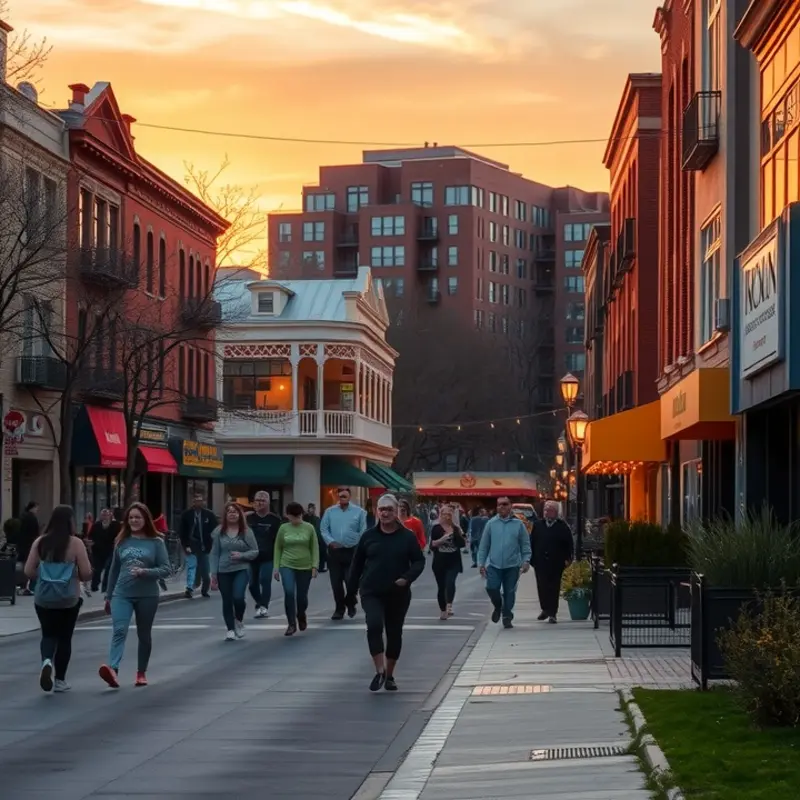As individuals and families consider relocating to vibrant new cities across the U.S., understanding the local crime rate is essential for ensuring a safe and enjoyable living experience. Renters—whether young professionals, students, couples, or families—must navigate the complexities of local rental markets while also prioritizing safety. The right neighborhood can not only enhance one’s quality of life but can also provide peace of mind in terms of security. With crime statistics, safety reports, and local resources at hand, understanding how to assess neighborhood safety is key during the relocation process. This guide delves into the crime rates of popular urban destinations while highlighting practical tips and resources for renters seeking their ideal home in a secure environment.
Understanding Crime Statistics: What Renters Should Know

When considering a move to a new neighborhood, understanding crime statistics is crucial for ensuring both safety and peace of mind. Crime statistics offer valuable insights into the safety of an area, but interpreting them correctly requires a nuanced approach.
Crime data originates from several sources, such as local police departments, FBI’s Uniform Crime Reporting (UCR) program, and community surveys. These sources compile data on various crime types, which generally fall into two categories: violent crimes and property crimes. Violent crimes include offenses like assault and robbery, while property crimes cover burglary and theft.
However, raw numbers don’t tell the whole story. To make an informed decision, consider crime rates, which reflect the frequency of crimes relative to the population size. This metric offers a clearer picture by accounting for differences in neighborhood sizes. For instance, a densely populated urban community might naturally report more incidents than a sparsely populated suburb, but the crime rate could reveal that the latter is more dangerous per capita.
For a deeper dive into localized safety, demographic-specific resources can be invaluable. Families might prioritize schools with low incident reports, available through district-level reports, while students and young professionals might prefer insights from campus safety surveys or community forums. Understanding the demographics and their relevant concerns can shape a more tailored assessment of neighborhood safety.
When researching, it’s vital to seek multiple data perspectives. Websites maintained by police departments often present detailed crime maps that offer insight into specific locales within a neighborhood. Coupling these with user-aggregated platforms helps to gauge the community’s perception and real-time updates that may not yet reflect in official statistics. Consider demographic nuances crucial for identifying patterns, such as neighborhoods with high student populations or areas undergoing gentrification that might show transient spikes in crime.
Practical advice for renters includes visiting prospective neighborhoods at different times of the day and speaking with local residents or potential landlords. Evaluating the neighborhood personally can corroborate or contradict statistical impressions. Additionally, digital forums can reveal community-driven safety initiatives that reflect an active societal commitment to neighborhood wellness.
Another vital consideration is the safety of the property itself, extending beyond just the community. Renters should inquire about security measures like alarm systems or neighborhood watch programs. For more insights on ensuring apartment safety, check out safe apartment laundry habits, which address personal safety within the home environment.
Ultimately, crime statistics are a crucial, albeit initial, step in evaluating safety. Leveraging these insights to complement personal experience and demographic needs results in a more comprehensive understanding of neighborhood safety. This informed approach guides renters to secure not just a new home, but a genuine place of refuge and peace.
City-Specific Insights: Crime Rates in Major U.S. Cities

When relocating, understanding crime rates in major U.S. cities is crucial for choosing a safe neighborhood. This chapter delves into crime statistics and trends in New York, Los Angeles, Chicago, and Houston, offering targeted insights for families, students, and professionals.
New York City
New York City, with one of the largest police departments globally, presents a mixed picture of safety. In recent years, the city has seen a decrease in major crimes, with the New York Police Department reporting a drop in serious offenses by 5% last year. Manhattan neighborhoods, like Upper East Side and Battery Park City, boast lower crime rates than downtown areas. For families seeking safety, Staten Island presents a suburban feel with less crime, ideal amenities, and family-friendly parks.
Students often prefer Brooklyn neighborhoods like Park Slope, which offers a blend of safety and vibrant culture. Safety amenities such as well-lit streets and active neighborhood watch programs enhance resident security. Mobile professionals may find neighborhoods like Tribeca appealing for their low violent crime rates and proximity to business hubs.
Los Angeles
Los Angeles, a sprawling metropolis, shows significant variation in crime rates across neighborhoods. The city saw a 6% decrease in overall crime in the latest FBI statistics. West Los Angeles and parts of the South Bay, such as Redondo Beach, offer relatively lower crime rates, making them suitable for families seeking safer environments.
For students, living near universities like UCLA can be both convenient and safer, though some may prefer the lively yet secure atmosphere of neighborhoods like Westwood. Professionals might focus on Santa Monica or Century City, known for lower property crime rates and robust local security measures, including dedicated neighborhood patrols.
Chicago
Chicago’s crime rates are frequently highlighted, but the city is more complex than its statistics suggest. The Chicago Police Department’s recent reports show a 3% decline in violent crime over the past year. Neighborhoods like Lincoln Park and Lakeview are relatively safer, scoring below national average crime rates, which can be particularly alluring for families.
Students attending DePaul University often reside in Lincoln Park, benefiting from its low crime and vibrant social scene. Mobile professionals may consider the Loop or River North, where high security, including extensive surveillance systems, plays a crucial role in maintaining safety.
Houston
Houston, with an expansive suburban landscape, reports a recent 4% decrease in overall crime. Neighborhoods like West University and Memorial are known for their safety and community-focused living, making them desirable for families.
Students might find Midtown attractive, offering safety without compromising on nightlife and cultural experiences. Professionals can consider the Galleria or Downtown areas, where low crime rates complement bustling business environments.
In choosing a safe haven, prospective renters should prioritize not just crime statistics but also local safety amenities. Features such as secure parking, modern surveillance systems and community outreach programs contribute to a safer living experience. For additional resources on choosing a safe rental, explore various rental safety tips. Understanding these dynamics can ensure a smooth, secure transition to your new city home.
Final words
Renting in a new city should encompass more than just choosing the right apartment; it is equally important to find a neighborhood that prioritizes safety. By understanding how to interpret crime rates and utilizing local data to inform your housing decision, you can ensure a secure environment that aligns with your lifestyle—whether you’re a student, a professional, a couple, or a family. Neighborhood crime data not only helps you find a safe haven but also empowers you to engage with your community, fostering relationships and enhancing your overall living experience.









